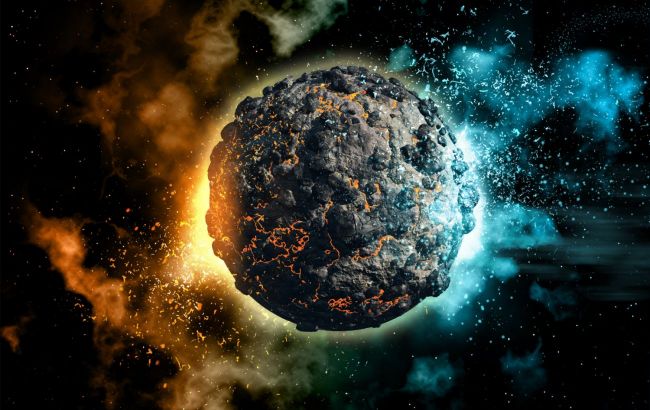Scientists predicted demise of our planet
 What will be the last days of our planet (photo: Freepik)
What will be the last days of our planet (photo: Freepik)
The Sun is an important source of gravity and energy, but one day it will lead to the demise of Earth. When the central star of the Solar System ages, its life cycle will eventually engulf our planet. This will happen in a few billion years. However, life on Earth may disappear much earlier.
Humanity may face extinction in the next few centuries if the current rates of anthropogenic climate change are not slowed down. Our civilization may also vanish due to nuclear war.
What the last days of Earth might be like, according to the Live Science.
What will be the death of the Sun
"Earth has, probably, about 4.5 billion years left before the Sun becomes a red giant and then engulfs the Earth," said planetary scientist Ravi Kopparapu from NASA's Goddard Space Flight Center.
A red giant forms in the final stages of stellar evolution when a star runs out of hydrogen for nuclear fusion, essential for its energy production, and begins to die.
Once nuclear fusion ceases, gravity takes over. The helium core will start to contract under the force of gravity, leading to a rise in temperature. This surge in heat will cause a sudden expansion of the Sun's outer plasma layer. It will increase at least to the size of Earth's orbit.
What will be the last days of Earth
Scientists suggest that it is likely that Earth may not endure for the full 4.5 billion years, or it will be a substantially altered planet by then.
"There will be intense heat on the planet long before the Sun completes its transition to a red giant. When the dying process of our system's main star increases the temperature, oceans will evaporate, then the atmosphere will disappear, and finally, solar gravitational tidal forces will shred Earth," explained the scientist.
Approximately 1.3 billion years from now, humans may find it impossible to survive on Earth due to persistent heat and humidity. According to Kopparapu, in about 2 billion years, oceans could evaporate as the Sun's brightness increases by nearly 20% compared to its current state.
Some species, such as extremophiles that live near hydrothermal vents on the ocean floor, might have a chance of survival until that point. However, for humans, there will be no chances under such conditions. At high temperatures and humidity, the human body simply won't be able to cool down through sweating.
Initially, it was thought that the wet-bulb threshold for humans is 35 degrees Celsius, but recent research indicates that a temperature of 30 degrees Celsius can be lethal. It's worth noting that wet-bulb temperatures at 30 degrees Celsius are equivalent to 50 degrees Celsius at zero humidity, highlighting the impact of humidity on the perceived temperature.
In some places on Earth, wet-bulb temperatures have already exceeded 32 degrees Celsius multiple times. Climate models predict that by the end of the century, temperatures of 35 degrees Celsius will become a regular occurrence in regions like the Middle East. Essentially, Earth's greenhouse gases pose a threat to life on the planet long before the Sun dies.

